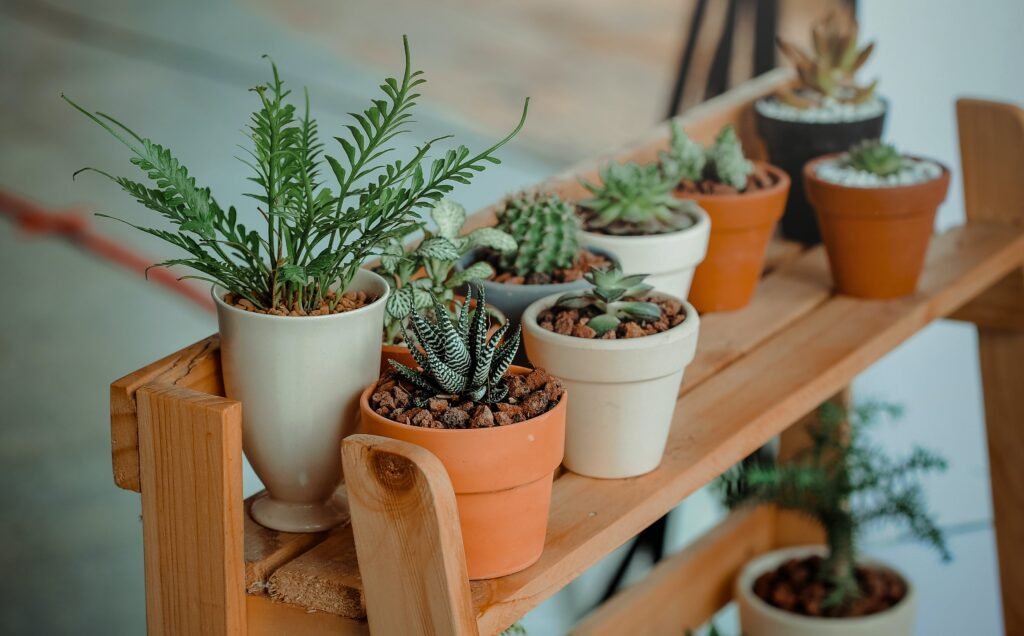Embracing the Pleasure of Growing, Harvesting, and Cooking with Homegrown Produce
Homegrown produce offers a myriad of benefits that not only enhance the quality of our lives but also bring immense joy and fulfillment. It allows individuals to connect with nature, experience the satisfaction of nurturing a plant from seed to harvest, and indulge in the delight of cooking with the freshest ingredients possible. In this article, we will explore the various advantages of growing your produce, guide you in starting a home garden, offer tips for successful gardening, and delve into the exciting culinary possibilities that homegrown produce presents.
Benefits of Growing Your Produce
There are numerous advantages to growing your produce. First and foremost, it provides the opportunity to cultivate fruits, vegetables, and herbs that are free from harmful pesticides and chemicals. By having control over the cultivation process, you can ensure that your homegrown produce is healthy, nutritious, and safe for consumption. Furthermore, growing your food promotes sustainability and reduces your carbon footprint, as it eliminates the need for long-distance transportation and excessive packaging.
Additionally, home gardening is a fantastic way to engage in physical activity and spend time outdoors. It allows individuals to connect with nature, relieve stress, and enjoy the therapeutic benefits of tending to plants. Moreover, homegrown produce often tastes far superior to store-bought alternatives, as it is picked at the peak of ripeness, ensuring maximum flavor and nutritional value. By growing your fruits, vegetables, and herbs, you can cultivate a deeper appreciation for the food you consume and gain a sense of accomplishment from nurturing living organisms.
How to Start a Home Garden
Starting a home garden may seem daunting, but with the right approach, it can be an enjoyable and fulfilling experience. Begin by selecting an appropriate location for your garden. Consider factors such as sunlight exposure, soil quality, and accessibility to water sources. Most plants require at least six hours of direct sunlight per day, so choose a spot that receives adequate sunlight throughout the day.
Next, prepare the soil by removing any weeds or debris and loosening it with a garden fork or tiller. Ensure that the soil is well-draining and rich in organic matter. If your soil is poor, consider enriching it with compost or other organic amendments.
Once the soil is prepared, it’s time to choose the plants you want to grow. Take into account your climate, available space, and personal preferences. Opt for plants that are well-suited to your region and that you enjoy consuming. Some popular choices for beginners include tomatoes, peppers, herbs like basil and mint, and leafy greens such as lettuce and spinach.
After selecting your plants, it’s time to sow the seeds or transplant seedlings into the garden. Follow the instructions on the seed packets or consult gardening resources for guidance on proper planting depths and spacing. Water your newly planted garden thoroughly and monitor it regularly to ensure the soil remains consistently moist.
Choosing the Right Plants for Your Climate
One of the keys to a successful home garden is choosing plants that are well-suited to your climate. Different plants have varying temperature, humidity, and sunlight requirements, so it’s essential to select varieties that can thrive in your specific region.
Research your local climate zone to determine the average temperatures, frost dates, and length of the growing season in your area. This information will help you choose plants that are compatible with your climate and ensure a higher chance of success.
Consider factors such as the average annual rainfall and the length of the hot and cold seasons. For example, if you live in a region with a short growing season and cooler temperatures, opt for cold-tolerant crops like kale, broccoli, and carrots. If you reside in a hot and arid climate, choose drought-resistant plants such as cacti and succulents and heat-tolerant herbs like rosemary and thyme.
Additionally, take into account the amount of sunlight your garden receives throughout the day. Some plants require full sun, while others thrive in partial shade. Observe your garden throughout the day and note which areas receive the most sunlight. Use this information to choose plants that will flourish in the available light conditions.
By selecting plants that are well-adapted to your climate, you can ensure a bountiful harvest and minimize the risk of plant diseases and pest infestations.
Tips for Successful Gardening
To ensure a successful and rewarding gardening experience, keep the following tips in mind:
- Provide adequate water: Most plants require consistent moisture to thrive. Water your garden regularly, ensuring that the soil remains evenly moist but not waterlogged. Use a watering can or a drip irrigation system to provide water directly to the plant’s root zone.
- Mulch the soil: Apply a layer of organic mulch around your plants to retain moisture, suppress weed growth, and regulate soil temperature. Mulching also adds nutrients to the soil as it breaks down over time.
- Control pests naturally: Instead of relying on chemical pesticides, opt for natural pest control methods. Introduce beneficial insects like ladybugs and lacewings to your garden, use companion planting techniques, and regularly inspect your plants for signs of pests or diseases.
- Monitor plant nutrition: Feed your plants with organic fertilizers or compost to ensure they receive adequate nutrition. Follow the instructions on the fertilizer packaging and avoid over-fertilizing, as this can harm the plants.
Prune and harvest regularly: Regular pruning and harvesting promote healthy plant growth and prevent overcrowding. Remove dead or diseased plant parts and harvest fruits and vegetables when they reach peak ripeness. By following these tips, you can create an abundant and thriving garden that will provide you with a constant supply of fresh, homegrown produce.
Harvesting and Preserving Your Homegrown Produce
One of the most rewarding aspects of home gardening is the ability to harvest your produce. The joy of plucking a ripe tomato or snipping fresh herbs cannot be understated. To ensure the best flavor and nutritional value, it’s crucial to harvest your homegrown produce at the right time.
Different plants have different harvesting requirements. Some fruits and vegetables, like tomatoes and peppers, are best picked when fully ripe. Others, such as leafy greens and herbs, can be harvested as needed, allowing for a continuous supply throughout the growing season.
When harvesting, use clean, sharp tools to avoid damaging the plants. Be gentle and take care not to break stems or bruise the produce. After harvesting, wash the fruits and vegetables thoroughly to remove any dirt or debris.
To extend the shelf life of your homegrown produce, consider preserving it through methods such as canning, freezing, or drying. Canning involves sealing fruits and vegetables in jars with a combination of heat and acid to prevent spoilage. Freezing preserves produce by rapidly cooling it to low temperatures, inhibiting the growth of bacteria and enzymes.
Drying involves removing moisture from the produce, either through air drying or using a dehydrator, to prevent spoilage and promote long-term storage. By harvesting and preserving your homegrown produce, you can enjoy the flavors of your garden year-round and reduce food waste.
Exploring the Culinary Possibilities of Homegrown Produce
Homegrown produce opens up a world of culinary possibilities, allowing you to create delicious and nutritious meals with the freshest ingredients. The flavors of homegrown fruits, vegetables, and herbs are unparalleled, enhancing the taste of any dish.
When cooking with homegrown produce, it’s essential to let the ingredients shine. Simple recipes that highlight the natural flavors and textures of the produce are often the most satisfying. For example, a Caprese salad made with homegrown tomatoes, fresh mozzarella, and basil leaves is a delightful way to showcase the vibrant flavors of summer.
Experiment with different cooking techniques to elevate the flavors of your homegrown produce. Roasting vegetables brings out their natural sweetness, while grilling adds a smoky char. Sauteing fresh herbs in butter or olive oil releases their aromatic oils, infusing dishes with incredible flavor. Get creative and try new combinations of herbs, spices, and vegetables to create unique and memorable meals.
Cooking with Homegrown Herbs and Vegetables
Herbs and vegetables are the backbone of many delicious dishes, and having a bountiful supply of homegrown varieties at your fingertips opens up endless culinary possibilities. Here are some ideas for incorporating homegrown herbs and vegetables into your cooking:
- Herb-infused oils and vinegar: Create flavorful oils and vinegar by infusing them with herbs like rosemary, basil, or thyme. Use these infused oils and kinds of vinegar in dressings and marinades, or drizzle them over roasted vegetables for an extra burst of flavor.
- Fresh herbal teas: Harvest herbs like mint, chamomile, or lemon balm to make refreshing herbal teas. Simply steep the herbs in hot water for a few minutes, strain, and enjoy.
- Pesto and sauces: Blend fresh herbs like basil, parsley, or cilantro with garlic, nuts, cheese, and olive oil to make delicious pesto or sauces. Use these versatile condiments on pasta, sandwiches, or as a dip for vegetables.
- Stir-fries and sautés: Incorporate homegrown vegetables into stir-fries and sautés for a healthy and flavorful meal. The vibrant colors and crisp textures of homegrown produce will elevate your dishes to new heights.
Soups and stews: Use homegrown vegetables as the base for hearty soups and stews. From classic tomato soup to comforting vegetable stew, the possibilities are endless.
By cooking with homegrown herbs and vegetables, you can infuse your meals with freshness, vibrancy, and exceptional flavor.
The Pleasure of Home-Growing Cannabis Seeds
Home-growing cannabis seeds offers a deeply rewarding and fulfilling experience, allowing individuals to cultivate their own medicinal or recreational cannabis in a controlled and nurturing environment. With an array of premium cannabis seed strains available from reputable suppliers like Growers Choice Seeds weed seeds, home growers have the opportunity to select from a diverse range of genetics tailored to their specific needs and preferences. Whether it’s the therapeutic qualities of CBD-rich strains or the uplifting effects of sativa-dominant hybrids, the pleasure of home-growing cannabis seeds lies in the ability to curate a personalized cultivation journey that aligns with individual wellness goals.
Moreover, the process of germinating and nurturing cannabis seeds at home provides enthusiasts with a hands-on approach to understanding the growth cycle of these remarkable plants. From the initial stages of germination to the careful management of the vegetative and flowering stages, home growers have the privilege of witnessing the intricate development of cannabis plants firsthand.
Furthermore, the self-sufficiency and autonomy that come with home-growing cannabis seeds contribute to the overall pleasure of the experience. By harnessing the expertise of trusted suppliers of cannabis seeds | growers choice seeds, individuals can confidently embark on their growing endeavors, knowing that they have access to reliable resources and support. Not only does home-growing provide a source of high-quality cannabis tailored to personal preferences, but it also offers a deeper connection to the cultivation process, fostering a sense of pride and accomplishment with each successful harvest. This level of involvement and control over the cultivation process enhances the overall pleasure of home-growing cannabis seeds, making it a deeply rewarding and enriching endeavor for enthusiasts.
Tips for Growing Cannabis at Home
Growing cannabis at home requires careful attention to detail and adherence to specific guidelines. Here are some tips to help you cultivate healthy and thriving cannabis plants:
- Choose the right strain: Research different cannabis strains and select one that suits your preferences and needs. Consider factors such as THC and CBD content, flavor profiles, and growth characteristics.
- Provide proper lighting: Cannabis plants require intense light for optimal growth. Set up a grow light system that provides the necessary spectrum and intensity for each stage of the plant’s life cycle.
- Control temperature and humidity: Cannabis plants thrive in specific temperature and humidity ranges. Maintain a temperature between 70-85°F (21-29°C) during the day and slightly lower at night. Aim for a humidity level of around 40-60% during the vegetative stage and reduce it to 30-40% during the flowering stage.
- Ensure proper ventilation: Proper airflow is crucial for healthy cannabis plants. Use fans and ventilation systems to maintain fresh air circulation and prevent the buildup of excess moisture, which can lead to mold and mildew.
- Monitor and adjust nutrient levels: Cannabis plants require specific nutrients for healthy growth. Use fertilizers formulated for cannabis cultivation and monitor nutrient levels regularly. Adjust the nutrient solution as needed to maintain optimal plant health.
By following these tips, you can cultivate high-quality cannabis plants and enjoy the benefits of homegrown cannabis.
Understanding the Legalities of Homegrown Cannabis
Before embarking on home cannabis cultivation, it’s essential to understand the legalities and regulations surrounding it in your region. While cannabis has been legalized for recreational or medicinal use in many areas, the laws and restrictions can vary significantly.
Research the specific laws in your jurisdiction to ensure compliance and avoid any legal issues. Familiarize yourself with regulations regarding the number of plants allowed, cultivation methods, and storage requirements. Some regions require individuals to obtain licenses or permits before growing cannabis at home, while others have restrictions on the THC content or total plant count.
By understanding and adhering to the legalities of homegrown cannabis, you can enjoy the benefits of cultivating your plants while staying within the bounds of the law.
Finding Quality Seeds for Homegrown Plants
Finding quality seeds is essential for successful homegrown plants, whether it’s fruits, vegetables, herbs, or cannabis. Here are some tips to help you source high-quality seeds:
- Choose reputable seed banks: Look for seed banks with a good reputation and positive customer reviews. Reputable seed banks offer a wide selection of seeds, provide detailed information about each strain, and ensure the seeds are fresh and viable.
- Consider heirloom and organic seeds: Heirloom and organic seeds are often favored by home gardeners due to their superior flavor, nutritional value, and sustainability. These seeds are open-pollinated and have not been genetically modified.
- Join seed exchanges or communities: Seed exchanges and communities are a fantastic way to obtain unique and rare seeds. By participating in seed swaps or joining online forums, you can connect with other gardeners and access a diverse range of seeds.
- Save seeds from your plants: Once you have successfully grown your plants, save the seeds for future use. This allows you to perpetuate successful varieties and develop your collection of seeds over time.
Remember to store your seeds properly to maintain their viability. Keep them in a cool, dry place, away from direct sunlight and moisture. Consider using resealable bags or airtight containers to protect the seeds from air and humidity.
Conclusion
Embracing the pleasure of growing, harvesting, and cooking with homegrown produce is a rewarding and fulfilling endeavor. By cultivating your fruits, vegetables, herbs, and even cannabis, you can enjoy the numerous benefits of fresh, nutritious, and sustainably sourced ingredients. Whether you have a sprawling garden or a small balcony, the joy of home gardening and the culinary possibilities it offers are within reach. So, dig in, get your hands dirty, and experience the delight of creating meals with the fruits of your labor. Let the journey of homegrown produce begin!


